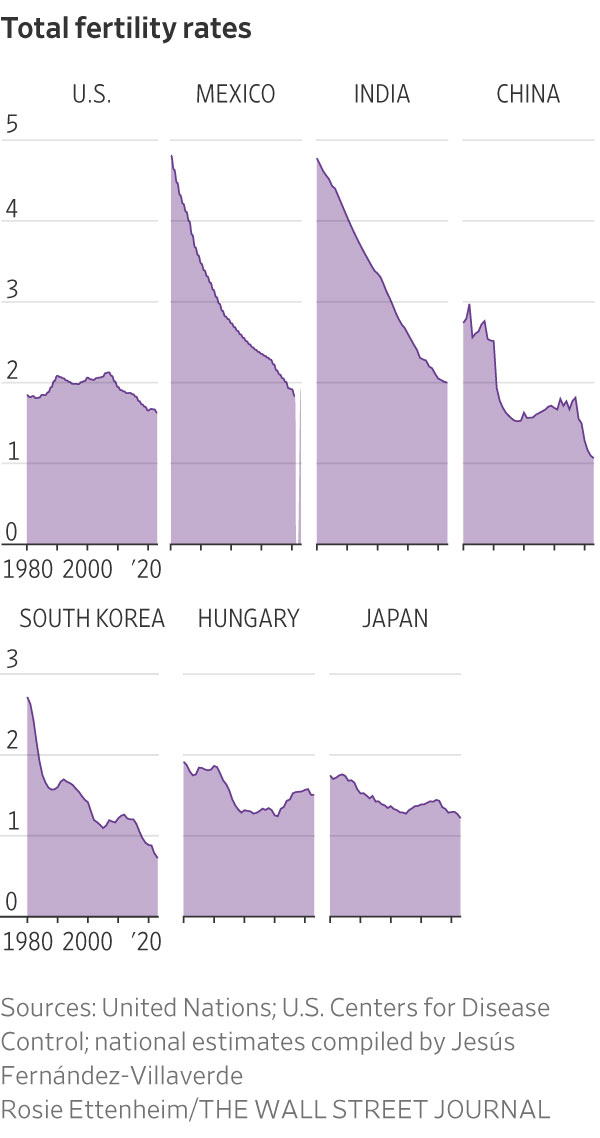Love and Deceit: Work-From-Home Era Spawns ‘Pillow Talk’ Insider Trading
Lawyers say recent securities-fraud cases have a new twist: they are the product of the daily humdrum of two adults doing their jobs remotely
Steven Teixeira’s use of his girlfriend’s laptop began innocently enough when she asked him to keep an eye on her work email while she went to fitness classes and ran errands.
As they weathered the pandemic from their apartment in Queens, N.Y., he gave in to temptation. His sweetheart worked as an executive assistant at Morgan Stanley, and her calendar invites included meetings about planned mergers and acquisitions that involved the investment bank.
Teixeira, a compliance executive at a payment-processing company whom she intended to marry, used the information to trade in advance of the deals. It netted him thousands in profits, promises of Rolex watches from friends he tipped off, and the scrutiny of federal officials probing insider trading. He pleaded guilty to a dozen fraud charges in June.
There is a rich history in securities fraud of “pillow talk” cases, in which insider traders glean confidential information from romantic partners. The Covid era offered a twist: Secrets weren’t spilled in the bedroom or over a bottle of wine, but during the humdrum routine of two adults working from home.
“During Covid, there was an uptick in brazen conduct,” said Edward Imperatore, a defence lawyer at law firm Morrison & Foerster. “In a work-from-home environment, people acted with more impunity.”
Another recent case snared a boyfriend who was training to work for the Federal Bureau of Investigation. Seth Markin pleaded guilty in December to trading on information he purloined from his lawyer girlfriend, an associate in the Washington office of law firm Covington & Burling.
In 2021, she was working on a pharmaceutical acquisition from her one-bedroom apartment, where Markin spent days at a time. According to prosecutors, she trusted him because he told her he had a security clearance, was going to be an FBI agent, and wanted to marry her.
Prosecutors said Markin passed on tips that led to at least 20 people trading based on confidential information. “I knew that my behaviour was wrong,” Markin told the judge during his plea hearing. He is scheduled to be sentenced in March.
Representatives for the FBI and Covington declined to comment.
In Teixeira’s case, he was aided by a mouse-jiggler he bought that ensured his girlfriend’s laptop wouldn’t lock when she wasn’t using it, according to court documents. He has been cooperating with prosecutors and is scheduled to testify this year at the trial of his former friend, Jordan Meadow, who at the time was a stockbroker with Spartan Capital Securities. Meadow made more than $700,000 trading on Teixeira’s information and used the tips to advise clients who made millions, prosecutors allege.
“Yo you see UFS,” Meadow texted Teixeira, referencing the stock symbol of a company involved in a $3 billion deal, according to the indictment. He then asked for more nonpublic information, texting, “Feed me.”
Meadow has pleaded not guilty to the eight charges he is facing. Lawyers for Meadow and Spartan declined to comment, as did a spokeswoman for Morgan Stanley, and a lawyer for Teixeira didn’t respond to requests for comment.
In 2022, the Securities and Exchange Commission settled with a New Jersey man who it accused of illegally trading on inside information he heard when his domestic partner, who worked in marketing for an IT company, participated in calls from home, including an 11:30 p.m. videoconference in a home-office adjacent to their bedroom. Although he typically discussed his trades with her, in this case he hid them, executing the transactions from his work office, the SEC said. The man, who didn’t admit wrongdoing, paid $180,000.
One thing hasn’t changed since the earliest days of pillow talk: It is usually the men who can’t resist the urge to take advantage of their confidential information.
“Insider trading is an equal opportunity crime,” said Dixie Johnson, a partner at law firm King & Spalding who advises companies on how to avoid such situations. “But the cases we see usually have involved men doing the trading.”
Not that female romantic partners have always been innocent bystanders. In 2002, adult-movie actress Kathryn Gannon, known on screen as Marylin Star, pleaded guilty to trading on tips from an investment bank CEO with whom she was having an affair. She was sentenced to three months in prison.
A decade later, former beauty queen turned hedge-fund consultant Danielle Chiesi pleaded guilty to securities fraud for her role in a sprawling insider-trading ring. In a sentencing submission, she blamed a toxic relationship with her boss—and lover of 20 years—who urged her to get inside information.
One challenge for prosecutors is determining whether the partner who is privy to the information was in on the crime, said former federal prosecutor Brendan Quigley.
“Do they say, ‘Oh, my God, I would never give information to my spouse or significant other?’ It depends not only on what actually happened, but also on the nature of their relationship,” said Quigley, who prosecuted insider-trading cases in Manhattan.
For defense lawyers, pillow-talk cases can be difficult to handle at trial, particularly if one partner testifies against another. “To a juror, this is the bad boyfriend,” said Imperatore, the defense attorney. “He’s acting badly in a relationship in a way that goes beyond the four corners of insider trading.”
Not surprisingly, many such relationships don’t survive. Teixeira and his girlfriend split up, as did Markin and his.
Former Playboy CEO Christie Hefner and her husband, William Marovitz, divorced about a year after the SEC accused him of illegally trading Playboy stock based on information gleaned from his wife—despite her explicit instructions not to. Marovitz didn’t admit wrongdoing in a 2011 settlement.
One woman whose husband recently settled insider-trading charges involving confidential information related to her employer said coping with the allegations strengthened their bond.
“It felt like an injustice,” said the woman, who wasn’t identified in court papers. “It brought us closer together.”
 Copyright 2020, Dow Jones & Company, Inc. All Rights Reserved Worldwide. LEARN MORE
Copyright 2020, Dow Jones & Company, Inc. All Rights Reserved Worldwide. LEARN MORE
This stylish family home combines a classic palette and finishes with a flexible floorplan
Just 55 minutes from Sydney, make this your creative getaway located in the majestic Hawkesbury region.
Birthrates are falling fast across countries, with economic, social and geopolitical consequences
The world is at a startling demographic milestone. Sometime soon, the global fertility rate will drop below the point needed to keep population constant. It may have already happened.
Fertility is falling almost everywhere, for women across all levels of income, education and labor-force participation. The falling birthrates come with huge implications for the way people live, how economies grow and the standings of the world’s superpowers.
In high-income nations, fertility fell below replacement in the 1970s, and took a leg down during the pandemic. It’s dropping in developing countries, too. India surpassed China as the most populous country last year, yet its fertility is now below replacement.
“The demographic winter is coming,” said Jesús Fernández-Villaverde, an economist specialising in demographics at the University of Pennsylvania.
Many government leaders see this as a matter of national urgency. They worry about shrinking workforces , slowing economic growth and underfunded pensions; and the vitality of a society with ever-fewer children. Smaller populations come with diminished global clout, raising questions in the U.S., China and Russia about their long-term standings as superpowers.
Some demographers think the world’s population could start shrinking within four decades—one of the few times it’s happened in history.
Donald Trump , this year’s presumptive Republican presidential nominee, has called collapsing fertility a bigger threat to Western civilization than Russia. A year ago Japanese Prime Minister Fumio Kishida declared that the collapse of the country’s birthrate left it “standing on the verge of whether we can continue to function as a society.” Italian Prime Minister Giorgia Meloni has prioritized raising the country’s “demographic GDP.”
Governments have rolled out programs to stop the decline—but so far they’ve barely made a dent.
Demographic surprise
In 2017, when the global fertility rate—a snapshot of how many babies a woman is expected to have over her lifetime—was 2.5, the United Nations thought it would slip to 2.4 in the late 2020s. Yet by 2021, the U.N. concluded, it was already down to 2.3—close to what demographers consider the global replacement rate of about 2.2. The replacement rate, which keeps population stable over time, is 2.1 in rich countries, and slightly higher in developing countries, where fewer girls than boys are born and more mothers die during their childbearing years.
While the U.N. has yet to publish estimated fertility rates for 2022 and 2023, Fernández-Villaverde has produced his own estimate by supplementing U.N. projections with actual data for those years covering roughly half the world’s population. He has found that national birth registries are typically reporting births 10% to 20% below what the U.N. projected.

China reported 9 million births last year , 16% less than projected in the U.N.’s central scenario. In the U.S., 3.59 million babies were born last year, 4% less than the U.N. projected. In other countries, the undershoot is even larger: Egypt reported 17% fewer births last year. In 2022, Kenya reported 18% fewer.
Fernández-Villaverde estimates global fertility fell to between 2.1 and 2.2 last year, which he said would be below global replacement for the first time in human history. Dean Spears, a population economist at the University of Texas at Austin, said while the data isn’t good enough to know precisely when or if fertility has fallen below replacement, “we have enough evidence to be quite confident about…the crossing point not being far off.”
In 2017 the U.N. projected world population, then 7.6 billion, would keep climbing to 11.2 billion in 2100. By 2022 it had lowered and brought forward the peak to 10.4 billion in the 2080s. That, too, is likely out of date. The Institute for Health Metrics and Evaluation at the University of Washington now thinks it will peak around 9.5 billion in 2061 then start declining.

In the U.S., a short-lived pandemic baby boomlet has reversed. The total fertility rate fell to 1.62 last year, according to provisional government figures, the lowest on record .
Had fertility stayed near 2.1, where it stood in 2007, the U.S. would have welcomed an estimated 10.6 million more babies since, according to Kenneth Johnson, senior demographer at the University of New Hampshire.
In 2017, when the fertility rate was 1.8, the Census Bureau projected it would converge over the long run to 2.0. It has since revised that down to 1.5. “It has snuck up on us,” said Melissa Kearney, an economist at the University of Maryland specialising in demographics.
A second demographic transition?
Historians refer to the decline in fertility that began in the 18th century in industrialising countries as the demographic transition. As lifespans lengthened and more children survived to adulthood, the impetus for bearing more children declined. As women became better educated and joined the workforce, they delayed marriage and childbirth, resulting in fewer children.
Now, said Spears, “the big-picture fact is that birthrates are low or are falling in many diverse societies and economies.”
Some demographers see this as part of a “second demographic transition,” a society-wide reorientation toward individualism that puts less emphasis on marriage and parenthood, and makes fewer or no children more acceptable.

In the U.S., some thought at first that women were simply delaying childbirth because of lingering economic uncertainty from the 2008 financial crisis.
In research published in 2021 , the University of Maryland’s Kearney and two co-authors looked for possible explanations for the continued drop. They found that state-level differences in parental abortion notification laws, unemployment, Medicaid availability, housing costs, contraceptive usage, religiosity, child-care costs and student debt could explain almost none of the decline. “We suspect that this shift reflects broad societal changes that are hard to measure or quantify,” they conclude.
Kearney said while raising children is no more expensive than before, parents’ preferences and perceived constraints have changed: “If people have a preference for spending time building a career, on leisure, relationships outside the home, that’s more likely to come in conflict with childbearing.”
Meanwhile, time-use data show that mothers and fathers, especially those that are highly educated, spend more time with their children than in the past. “The intensity of parenting is a constraint,” Kearney said.
Erica Pittman, a 45-year-old business banker in Raleigh, N.C., said she and her husband opted to have only one child because of demands on their time, including caring for her mother, who died last year after a long battle with multiple sclerosis. Their 8-year-old son is able to participate in theatre workshops, soccer and summer camps because the couple, with a combined income of about $225,000 a year, has more time and money.

“I feel like a better mom,” Pittman said. “I feel like I can go to work—because I have a fairly demanding job—but I can also make time to volunteer at his school, be the chaperone for the field trip and do those kinds of things, because I only have one to coordinate with my schedule.”
Pittman said she only questions their decision when her son says he wishes he had a sibling to play with. In response, she and her husband, a middle-school history teacher, pick vacation destinations with a kids’ club, such as a Disney cruise, so her son can play with others his age.
‘Plugged into the global culture’
Fertility is below replacement in India even though the country is still poor and many women don’t work —factors that usually sustain fertility.
Urbanisation and the internet have given even women in traditional male-dominated villages a glimpse of societies where fewer children and a higher quality of life are the norm. “People are plugged into the global culture,” said Richard Jackson, president of the Global Aging Institute, a nonprofit research and education group.
Mae Mariyam Thomas, 38, who lives in Mumbai and runs an audio production company, said she’s opted against having children because she never felt the tug of motherhood. She sees peers struggling to meet the right person, getting married later and, in some instances, divorcing before they have kids. At least three of her friends have frozen their eggs, she said.
“I think now we live in a really different world, so I think for anyone in the world it’s tough to find a partner,” she said.
Sub-Saharan Africa once appeared resistant to the global slide in fertility, but that too is changing. The share of all women of reproductive age using modern contraception grew from 17% in 2012 to 23% in 2022, according to Family Planning 2030, an international organisation.

Jose Rimon, a professor of public health at Johns Hopkins University, credits that to a push by national leaders in Africa which, he predicted, would drive fertility down faster than the U.N. projects.
Once a low fertility cycle kicks in, it effectively resets a society’s norms and is thus hard to break, said Jackson. “The fewer children you see your colleagues and peers and neighbours having, it changes the whole social climate,” he said.
Danielle Vermeer grew up third in a family of four children on Chicago’s North Side, where her neighbourhood was filled with Catholics of Italian, Irish and Polish descent and half her close friends had as many siblings as her or more. Her Italian-American father was one of four children who produced 14 grandchildren. Now her parents have five grandchildren, including Vermeer’s two children, ages 4 and 7.
The 35-year-old, who is the co-founder of a fashion thrifting app, said that before setting out to have children, she consulted dozens of other couples and her Catholic church and read at least eight books on the subject, including one by Pope Paul VI. She and her husband settled on two as the right number.
“The act of bringing a child into this world is an incredible responsibility,” she said.
New policies
Governments have tried to reverse the fall in fertility with pro natalist policies.
Perhaps no country has been trying longer than Japan. After fertility fell to 1.5 in the early 1990s, the government rolled out a succession of plans that included parental leave and subsidised child care. Fertility kept falling.
In 2005, Kuniko Inoguchi was appointed the country’s first minister responsible for gender equality and birthrate. The main obstacle, she declared, was money: People couldn’t afford to get married or have children. Japan made hospital maternity care free and introduced a stipend paid upon birth of the child.
Japan’s fertility rate climbed from 1.26 in 2005 to 1.45 in 2015. But then it started declining again, and in 2022 was back to 1.26.
This year, Prime Minister Fumio Kishida rolled out yet another program to increase births that extends monthly allowances to all children under 18 regardless of income, free college for families with three children, and fully paid parental leave.
Inoguchi, now a member of parliament’s upper house, said the constraint on would-be parents is no longer money, but time. She has pressed the government and businesses to adopt a four-day workweek. She said, “If you’re a government official or manager of a big corporation, you should not worry over questions of salary now, but that in 20 years time you will have no customers, no clients, no applicants to the Self-Defense Forces.”
Hungarian Prime Minister Viktor Orban has pushed one of Europe’s most ambitious natality agendas. Last year he expanded tax benefits for mothers so that women under the age of 30 who have a child are exempt from paying personal income tax for life. That’s on top of housing and child-care subsidies as well as generous maternity leaves.
Hungary’s fertility rate, though still well below replacement, has risen since 2010. But the Vienna Institute of Demography attributed this primarily to women delaying childbirth because of a debt crisis that hit around 2010. Adjusted for that, fertility has risen only slightly, it concluded.
In the U.S., while state and federal legislators have pushed to expand child-care subsidies and parental leave, they have generally not set a higher birthrate as an explicit goal. Some Republicans, though, are leaning in that direction. Last year, Trump said he backed paying out “baby bonuses” to prop up U.S. births, and GOP Arizona Senate candidate Kari Lake recently endorsed the idea.
Republican Sen. J.D. Vance of Ohio said falling fertility matters beyond the economic pressures of a smaller labor force and unfunded Social Security. “Do you live in communities where there are smiling happy children, or where people are just ageing?” he said in an interview. Lack of siblings and cousins, he said, contributes to children’s social isolation.
He’s studied potential solutions, in particular Hungary’s approach, but hasn’t seen proof of anything that works over the long term.
The Institute for Health Metrics and Evaluation found little evidence that pronatalist policies lead to sustained rebounds in fertility. A woman may get pregnant sooner to capture a baby bonus, researchers say, but likely won’t have more kids over the course of her lifetime.
Economic pressure
With no reversal in birthrates in sight, the attendant economic pressures are intensifying. Since the pandemic, labor shortages have become endemic throughout developed countries. That will only worsen in coming years as the postcrisis fall in birthrates yields an ever-shrinking inflow of young workers, placing more strain on healthcare and retirement systems.
Neil Howe , a demographer at Hedgeye Risk Management, has pointed to a recent World Bank report suggesting that worsening demographics could make this a second consecutive “lost decade” for global economic growth.
The usual prescription in advanced countries is more immigration, but that has two problems. As more countries confront stagnant population, immigration between them is a zero-sum game. Historically, host countries have sought skilled migrants who enter through formal, legal channels, but recent inflows have been predominantly unskilled migrants often entering illegally and claiming asylum.
High levels of immigration have also historically aroused political resistance, often over concerns about cultural and demographic change. A shrinking native-born population is likely to intensify such concerns. Many of the leaders keenest to raise birthrates are most resistant to immigration.
As birthrates fall, more regions and communities experience depopulation, with consequences ranging from closed schools to stagnant property values. Less selective colleges will soon struggle to fill classrooms because of the plunge in birthrates that began in 2007, said Fernández-Villaverde. Vance said rural hospitals can’t stay open because of the falling local population.
An economy with fewer children will struggle to finance pensions and healthcare for growing ranks of elderly. South Korea’s national pension fund, one of the world’s largest, is on track to be depleted by 2055. A special legislative committee recently presented several possible pension reforms, but there’s only a short window to act before the next presidential election campaign heats up.
There’s been little public pressure to act, said Sok Chul Hong, an economist at Seoul National University. “The elderly are not very interested in pension reform, and the youth are apathetic towards politics,” he said. “It is truly an ironic situation.”
This stylish family home combines a classic palette and finishes with a flexible floorplan
Just 55 minutes from Sydney, make this your creative getaway located in the majestic Hawkesbury region.






















